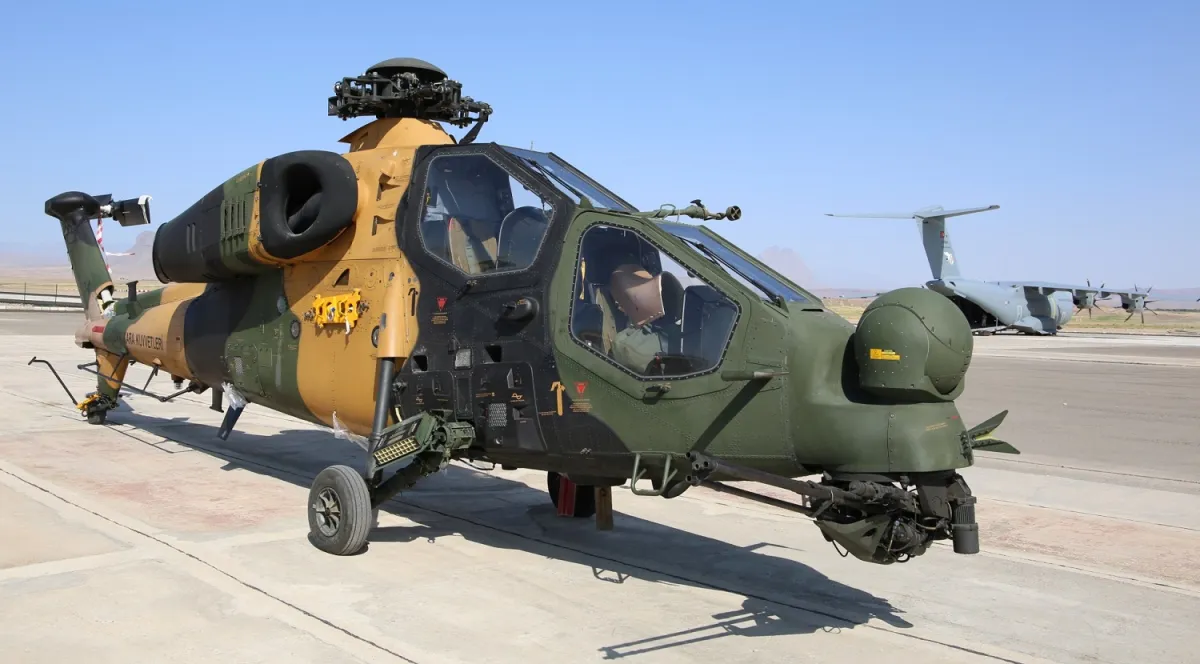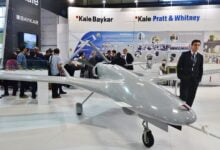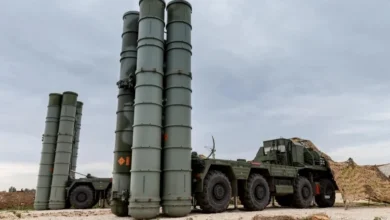Turkish “Pride” Helicopter T129 ATAK Crashes In Flames; Did Kurds Shoot It Down Using Anti-Aircraft Guns?

- The insurgent can be seen firing another single shot while resting the barrel on an elevated surface, most likely a rock or a bag, in the next cut of the film.
- The Kurds, who are present in Turkey, Syria, Iraq, and Iran, have long complained of persecution and asked for political recognition and rights.
The Turkish ATAK helicopters are AgustaWestland A129 Mangusta derivatives that are outfitted with indigenous Turkish avionics and weaponry. For assault and reconnaissance operations, it is a modern twin-seat, twin-engine helicopter.
The Turkish Army and other national armed forces, including the Turkish Gendarmerie, use the helicopter in combat.
When a subsequent, grainier video purports to show the helicopter crashing in flames, the article asserts that Iraqi and Syrian Kurdish militants were attempting to shoot down the rotorcraft with anti-aircraft weaponry.
Thermal film, probably from an electro-optical system, and a reticle showing the ATAK chopper flying a straight line from right to left are shown at the beginning of the video. Then, with each shot, a big gun fires deafening bursts, shaking the reticle.
The first important concern is raised by the fact that the bursts do not fire continuously and quickly but rather are spaced out in single blasts.
Even with non-state groups like the Kurdistan Workers Party (PKK), no anti-aircraft gun fires that slowly. The helicopter, which oddly doesn’t appear to be performing any evasive manoeuvres, could be shot at with a big calibre semi-automatic rifle, according to the best guess.
The second noteworthy abnormality is this one. All rotary and fixed-wing aircraft fly erratically to avoid being struck when faced with anti-aircraft (referred to as “ack ack” in military jargon). The pilot would have pulled up and flown higher if a gun had been pointed at it in order to avoid being hit.
The following segment of the film shows two ATAK gunships flying in a low-level, straightforward straight line from left to right while still in thermal mode.
Another heavier cannon firing in semi-automatic mode is captured by a larger crosshair or reticule on the camera. Following that, we hear fully automatic bursts that once more sound gentler and lighter, indicating that the weapon is not heavy but rather compact, like an assault rifle. The helicopters continue to fly and don’t appear to be bothered by the gunfire.
The next thermal image in the video shows what is thought to be a PKK fighter lying down, with smoke billowing in a single shot. An instant later, the camera pans to show a chinook helicopter flying over a mountain but remaining untouched.
The insurgent can be seen firing another single shot while resting the barrel on an elevated surface, most likely a rock or a bag, in the next cut of the film. This time, the camera pans to see a trio of three helicopters flying over the same mountain at a distance from one another that didn’t resemble Chinooks. Even these continue to fly in the same pattern after being shot at, most likely ignorant of it.
When the aircraft appears to be being shot at and about to crash, the video turns to even grainier footage of what appears to be an aircraft coming down heavily and blowing smoke from behind. The next segment shows a close-up of the colliding aircraft being circled for easy identification before it vanishes behind a mountain.
Expert Speak
Former Indian Army Air Defense officer Col. Shailesh Rai thinks the video has been extensively altered. The ‘heptr’ is initially visible moving from left to right. After that, it moves left to right.
How is it possible for the same weapon system to track the same object from two different angles? It appears that the weapon is a standard 14.5 mm Chinese type AA gun. Such firearms lack an advanced night sight with automatic tracking, according to Rai.
In the initial section of the film, he also noticed the strange semi-automatic firing mode of the purported AA gun. Even the Bofors 40mm L/70 can fire 300 bullets per minute, the man claimed.
For low-flying aircraft, L/70s may be devastating weapons, and with a well-trained crew, they can even harm an attack helicopter with significant armour. A single bullet to the engine, tail rotor, or main rotor can send it spinning out of control, while a single bullet to the pilot’s seat can send the aircraft plunging to the ground. It will be destroyed if one of the weapon stations holding rockets, air-to-surface missiles, and ammunition is struck.
The time of the video is explained by the present geopolitical situation. Since Sweden and Finland had been housing PKK activists, whom Turkey views as terrorists, Turkey had refused to admit them to NATO.
In the south of Turkiye, the PKK has been waging an insurgency for two decades. The Kurds, who are present in Turkey, Syria, Iraq, and Iran, have long complained of persecution and asked for political recognition and rights.
PKK has ties to the People’s Protection Units (YPG) and the Kurdish-led Syrian Democratic Forces (SDF), which have long been engaged in combat against Daesh (ISIS) and other Turkiye-supported extremist organisations like Hayat Tahrir al-Shams (HTS) and the Free Syrian Army, which is affiliated with Al Qaeda, Jabhat al-Nusra, and the Al-Nusra Front (FSA).
Up until late 2019, when the Donald Trump administration made the decision to withdraw from Syria, Turkiye had engaged in a number of offensive assaults in northern Syria against the SDF, which was supported by the US.
President Recep Tayyip Erdogan once more threatened an offensive, claiming Sweden and Finland were holding up action against the PKK, after receiving assurances from the two Scandinavian countries about limiting PKK political and fundraising activities. This compelled the SDF to form a tactical alliance with the Syrian regime of President Bashar al-Assad, Russia, and Iran.







Facebook Comments